Overview
I led two interdisciplinary research projects exploring how interface design can influence user behavior:
- Undergraduate Sociology Thesis: Investigated the social impact and user perception of deceptive design patterns.
- Advanced Graphic Design Research Project: Analyzed and reconstructed deceptive patterns to explore their visual and behavioral mechanics.
Together, these studies deepened my understanding of deceptive patterns by analyzing, reconstructing, and reimagining them as ethical, user-centered “bright patterns” to create more transparent, trustworthy, and user-friendly design solutions.
Table of Contents
Sociological Research: Exploring the Impact of Online Manipulation and Deceptive Patterns on Vulnerable Communities
Research Advisor:
Dr. Janet Vertesi, Princeton University, Department of Sociology
Timeline:
Aug 2023 – Apr 2024
Abstract:
Deceptive patterns are user interface strategies used by designers to manipulate users into doing things they did not intend to do (Brignull et al. 2023). These design patterns cost internet users time, money, data privacy, among other social and psychological consequences. People from vulnerable populations including ethnic minorities, the socioeconomically disadvantaged, and the elderly are at higher risk of digital harm because of their positionality. This thesis explores the impacts of deceptive patterns on vulnerable communities, focusing on effects, felt emotions, and coping strategies of individuals in the context of their socio-cultural background. While the goal of the thesis is to reveal the impacts of deceptive patterns, participants shared a variety of insights that shed light on larger themes of online manipulation and how people experience the internet. The discussion concludes with an exploration of interventions to mitigate the negative effects of malicious online practices on vulnerable internet users.
The Problem:
Deceptive design patterns in online interfaces increasingly affect users, particularly vulnerable populations, by manipulating decisions that can lead to financial, emotional, or privacy harms. Despite growing expert awareness, little qualitative research explores users’ lived experiences or the sociocultural factors shaping them, highlighting the need for deeper understanding.
Research Gap:
Most research on deceptive patterns focuses on industry or designer perspectives, with limited attention to how users, especially vulnerable groups, experience them. The lack of diversity in study populations can bias results and limit their relevance, highlighting the need for a more inclusive, user-centered approach.
Research Questions:
- RQ1: How do sociocultural factors influence an individual’s experiences online?
- RQ2: How do deceptive patterns affect vulnerable populations? What role does digital literacy play in this vulnerability?
- RQ3: What coping strategies do individuals employ in response to deceptive patterns? How do these strategies differ across different digital literacy levels?
Methodology:
This thesis used a mixed-methods approach to examine how deceptive patterns affect internet users.
- Semi-structured interviews to explore participants’ personal experiences with deceptive patterns.
- Usability testing through an account deletion task to observe real-time interactions.
- Demographic surveys to collect background information and context.
Participants: 19 internet users representing diverse ages, digital literacy levels, and socioeconomic backgrounds.
Key Findings:
- Emotions and Reactions: Participants commonly reported frustration, anger, and fear toward deceptive patterns, with older users especially fearful of privacy breaches, scams, and phishing.
- Sociocultural Influence: Age and digital literacy shaped user experiences. Younger participants were more familiar with deceptive patterns, while older participants encountered them less often but were more susceptible in unfamiliar digital spaces.
- Coping Strategies: Participants coped by seeking family help, using AdBlock, or avoiding unfamiliar sites. Younger users favored technological tools, while older users relied on interpersonal support.
- Digital Literacy: Participants with higher digital literacy were more aware of deceptive patterns and better able to avoid them.
- User-Centric Education: Teaching users, especially vulnerable populations, about deceptive patterns can improve decision-making and reduce associated emotional distress.
Conclusion:
The findings suggest that users from certain demographic groups are more vulnerable to manipulation through deceptive design. This research emphasizes the importance of user education, ethical design, and policy reform as essential solutions to mitigate the harms of online deception.
Personal Takeaways:
- Developed strong interview and qualitative research skills, while gaining experience in sociological methods and research paper writing.
- Deepened my commitment to advocating for ethical design practices and better user protection policies.
- Reinforced my passion for promoting inclusive and safer digital environments.
Graphic Design Research: Con-Art
Type: Graphic Design Research, UX Design, Web Design
Tools: Figma, HTML/CSS/JS
Role: Researcher, Designer, Developer
Timeline: Spring 2024

Motivation
Building on my thesis research, I developed a learning tool to help users and designers better understand the experience of deceptive patterns. I experimented with exaggerated features of these patterns to show how they might appear to users who are less familiar with online or manipulative design. Unlike my thesis, this project focuses on the visual aspects of deceptive design rather than users’ felt experiences. Together, the two projects provide complementary insights into understanding and addressing deceptive patterns.
Why “Con-Art”?
The project is called Con-Art as a play on “con artist,” highlighting how there is a certain artistry to deceptive design. The name reflects the idea that manipulation in UX can be intentional and crafted, and the project explores how to unpack and reframe these patterns into ethical, user-centered experiences.
Graphic Design Research
I began with secondary research from:
- Deceptive.design
- UX case studies on dark patterns
- Evaluations of real websites using misleading UI
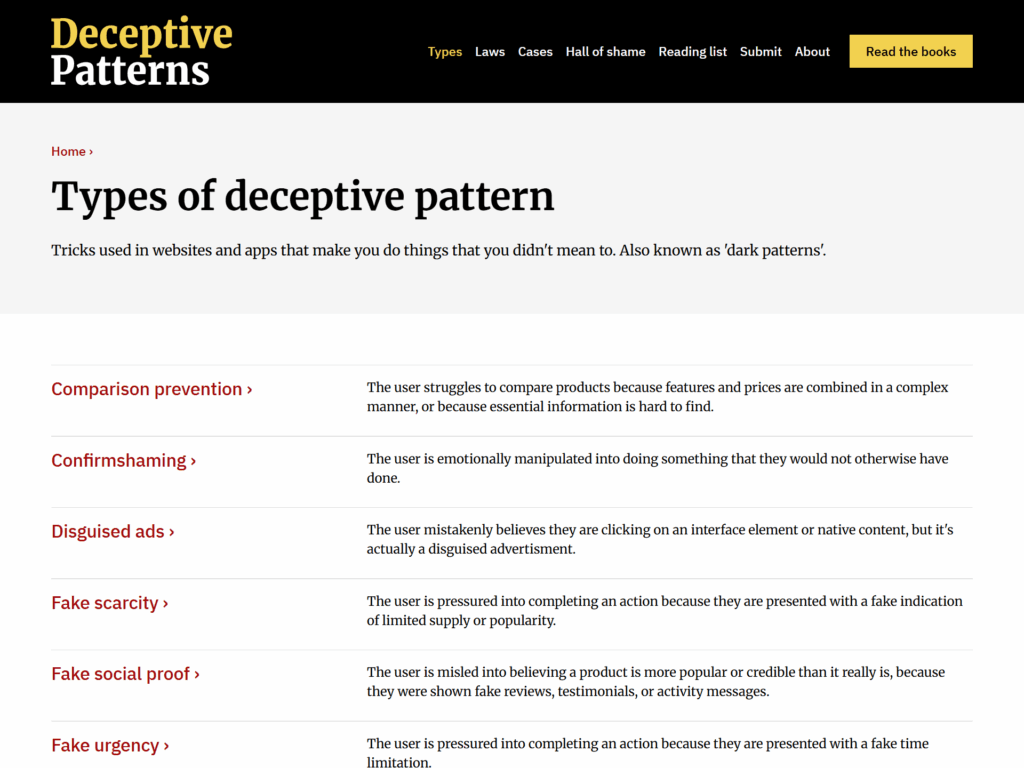
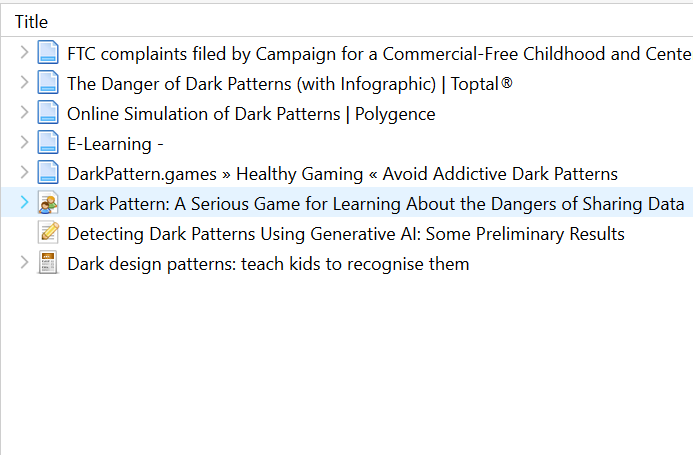
Ideation & Prototyping
My design process was both exploratory and iterative, grounded in research and driven by the challenge of teaching UX principles through interaction.
1. Early Sketching: Paper Wireframes
I began by sketching out paper wireframes for each deceptive pattern, visualizing how it might appear in a real interface. This helped me quickly explore how dark patterns manifest and how they influence user flow.
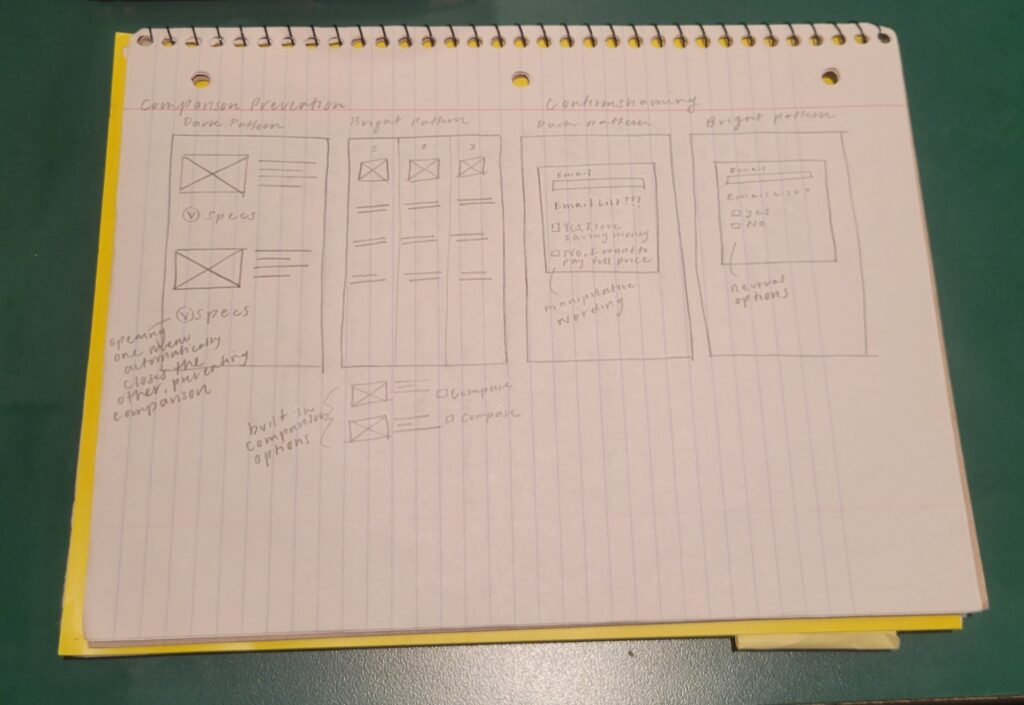
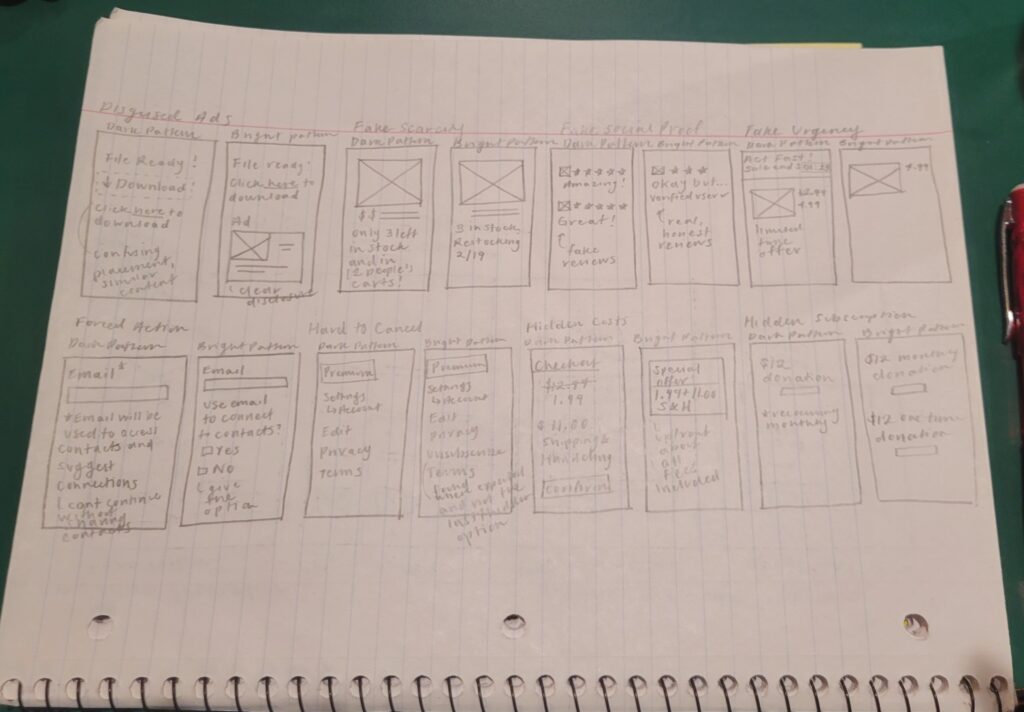
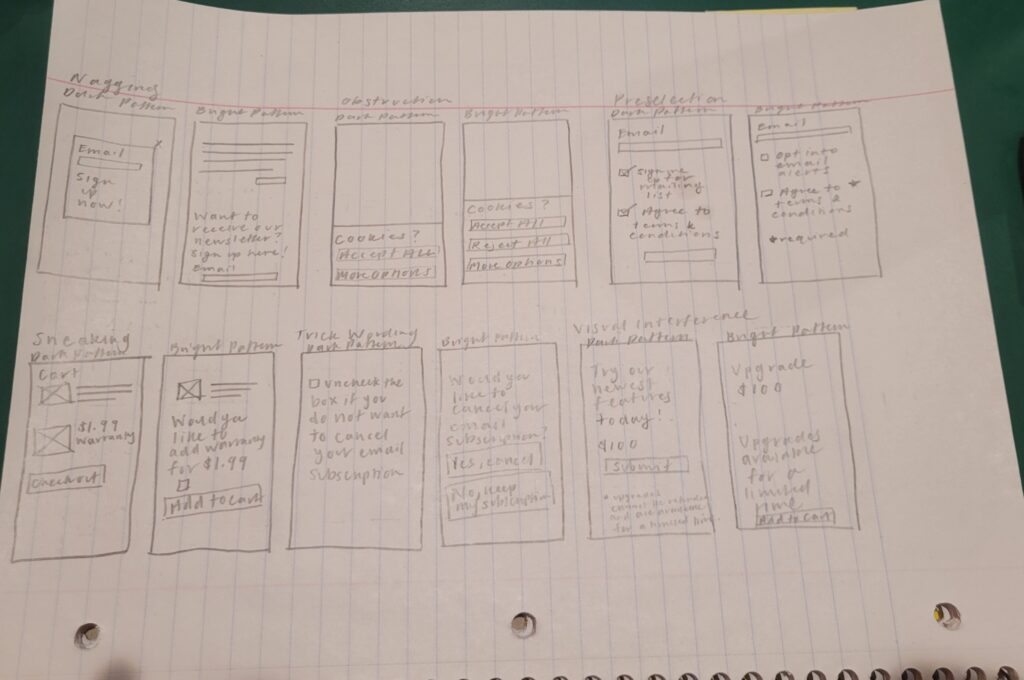
2. Figma Wireframes: Dark vs. Bright Patterns
I then created digital wireframes in Figma, pairing each dark pattern with its “bright pattern” counterpart—the ethical, user-centered alternative. This contrast helped me better define and communicate how deceptive patterns could be redesigned for clarity, consent, and respect.
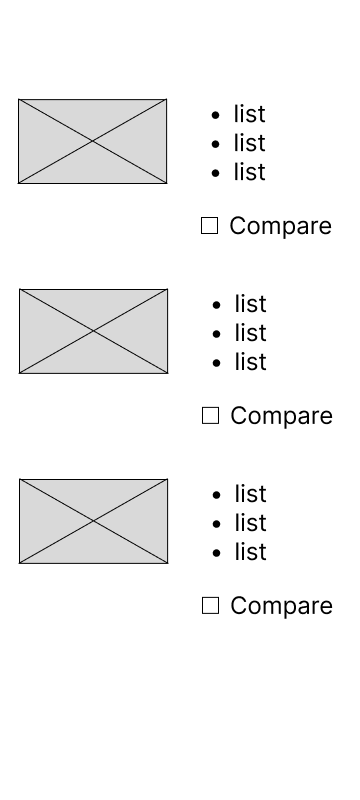



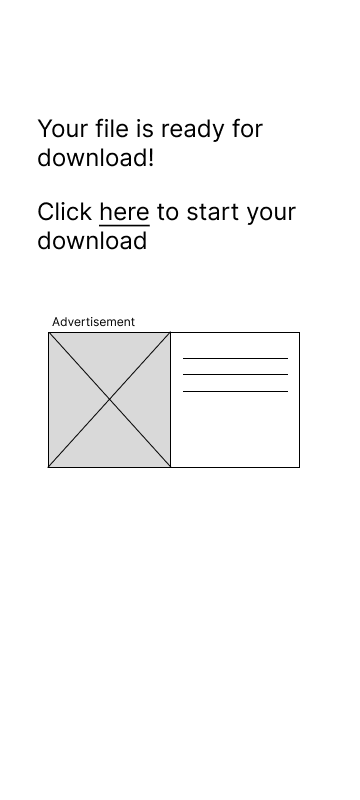



3. Visual Research: Pattern Library & Flash Cards
To deepen my understanding, I collected real-world examples of dark patterns from deceptive.design, printed them, and annotated them from a user’s perspective. I also created a set of flash cards as a learning tool. Each card featured a deceptive pattern on one side and a description of the deceptive pattern type on the other.
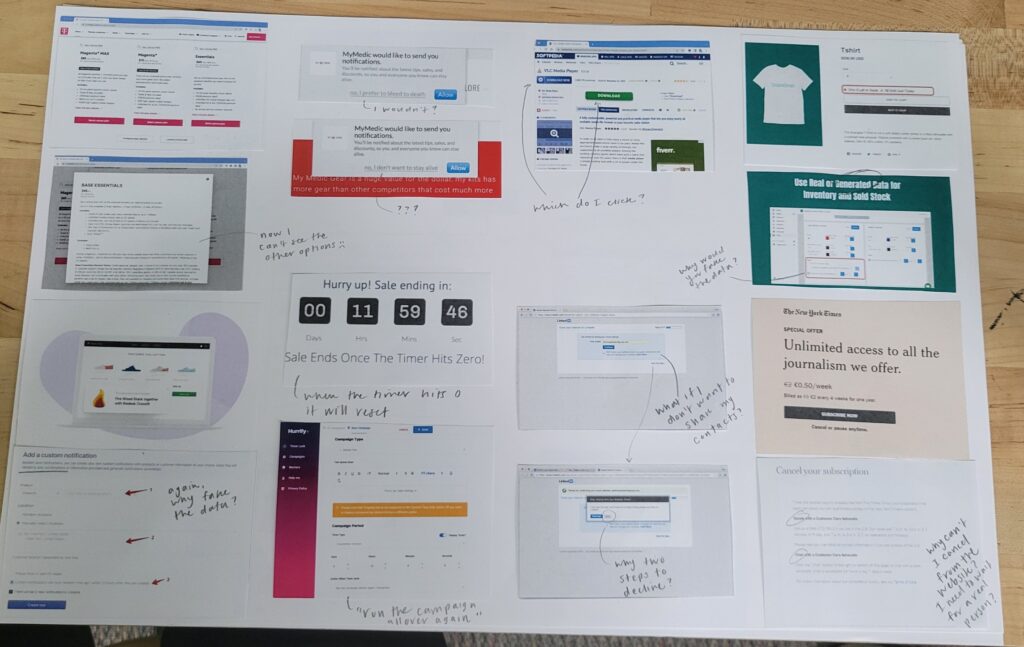
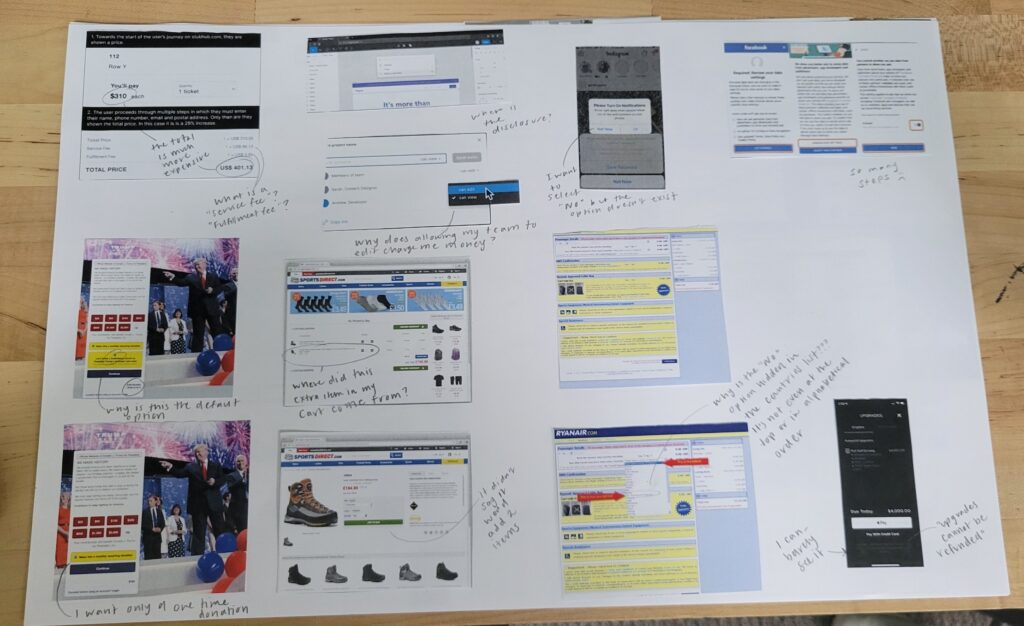
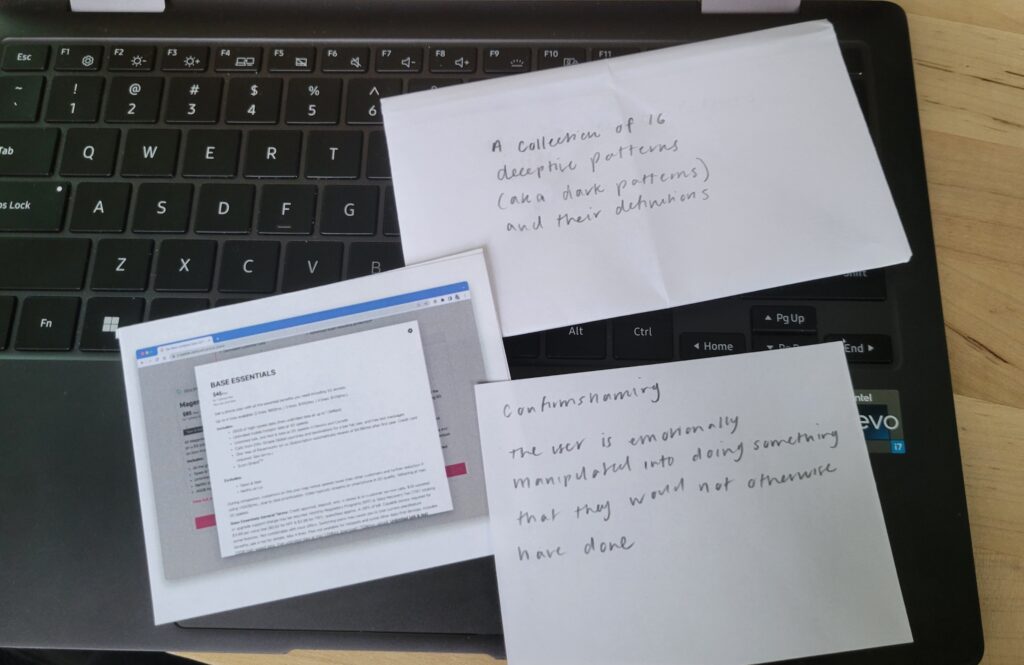
4. Interactive Prototyping in Figma
I built a high-fidelity prototype of a fake website using Figma that intentionally demonstrated poor UX. This prototype became the blueprint for the final site structure.
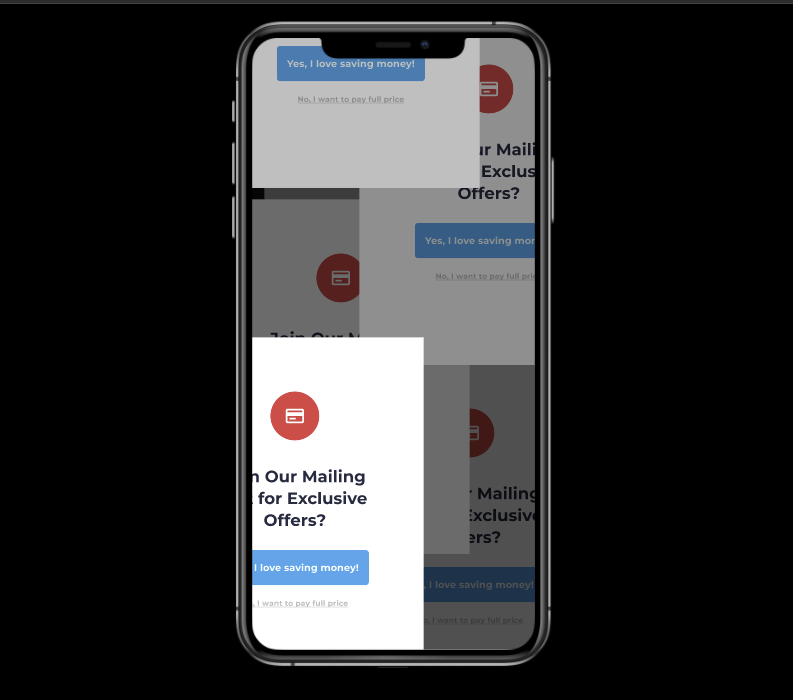
5. Development: Bringing the Concept to Life
Finally, I coded the Con-Art site using HTML, CSS, and JavaScript. The site features:
- Dark Mode: An intentionally manipulative experience using exaggerated deceptive patterns
- Light Mode: Educational content and redesigns that teach users how to recognize and avoid manipulation
This development process required me to not only apply interaction design principles but also ensure the performance, accessibility, and clarity of both modes.
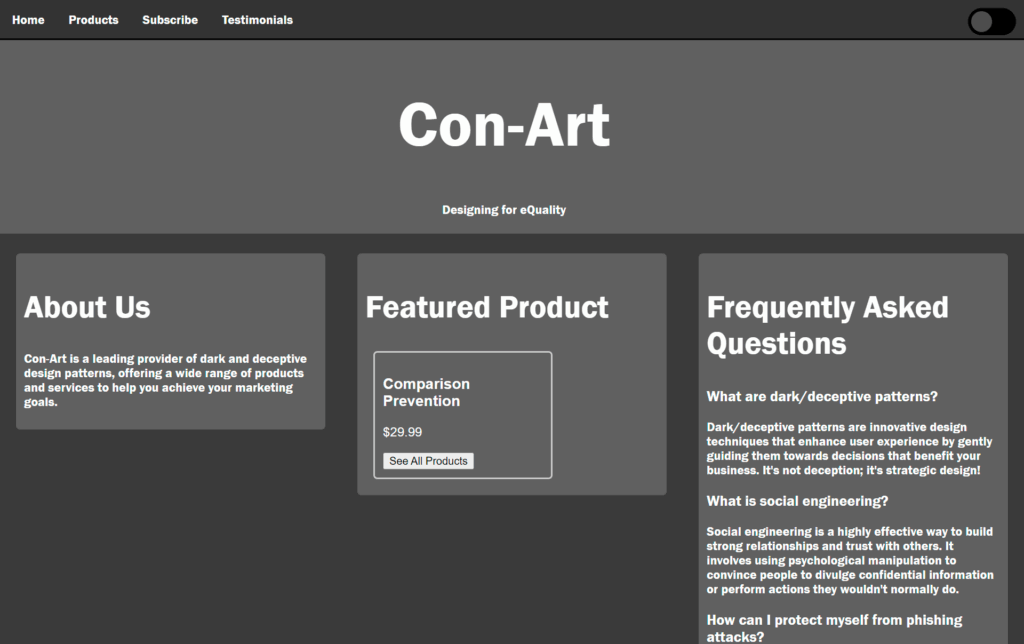
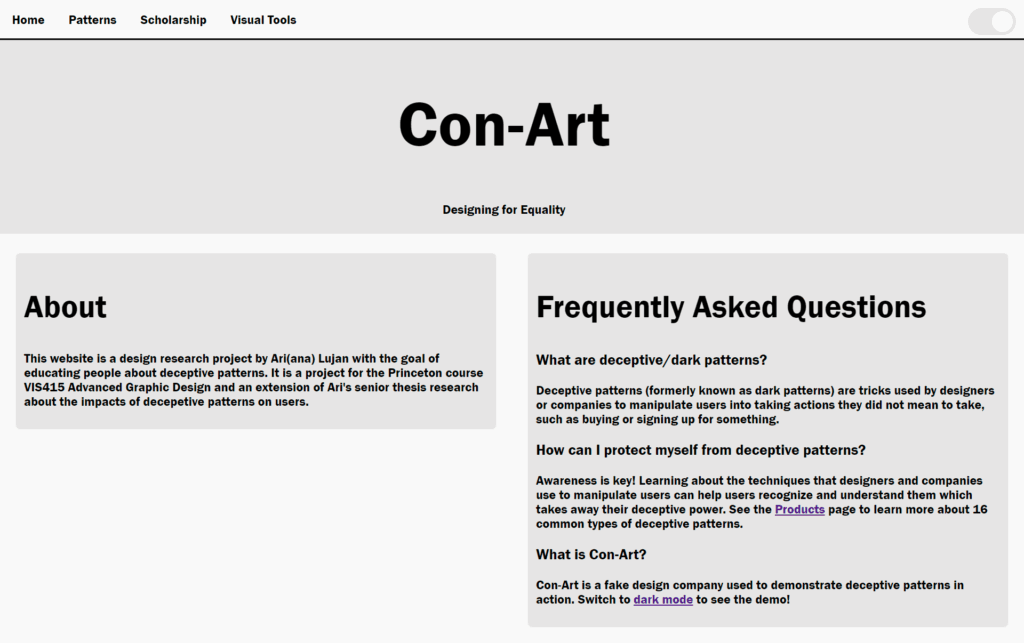
Final Design: An Interactive Teaching Tool
- Code: Hand-built using HTML, CSS, JavaScript
- AI as Tool: Used AI to scaffold basic structure, then customized and debugged extensively
- Design: Balanced visual exaggeration with educational intent
- Testing: Informal user feedback sessions to refine clarity and interactivity
Reflection
Designing Con-Art was a deeply exploratory project that strengthened my understanding of the ethical responsibilities of UX designers and the ways interface design can shape user behavior. By intentionally creating poor UX to teach good UX, I learned to reverse-engineer deceptive experiences, break them down, and reframe them using user-centered principles. The project also allowed me to grow in developing interactive learning tools, blending my skills in design, coding, and research into a unified experience. Key takeaways include:
- Reinforcing my passion for human-centered design and deepening my interest in digital ethics, interaction design, and UX education
- Understanding the subtle ways design choices affect trust and behavior
- Building confidence in creating interactive, educational experiences
Skills Demonstrated
- UX Research – Pattern analysis, user perspective annotation, secondary research
- Wireframing & Prototyping – Paper and digital wireframes in Figma, high-fidelity mockups
- Interaction Design – Designing intentional friction and contrast for learning impact
- Front-End Development – Custom site built with HTML, CSS, JavaScript
- Ethical Design Thinking – Identifying dark patterns and creating ethical alternatives
- Educational Design – Flash cards, paired comparisons, and explanatory content design
- Iterative Design Process – Moving from concept sketches to fully coded, interactive site